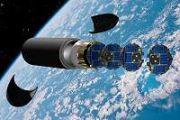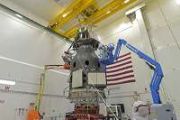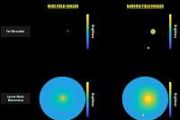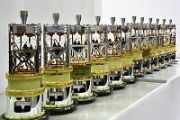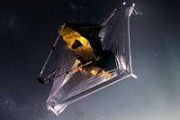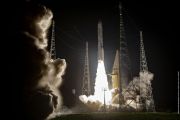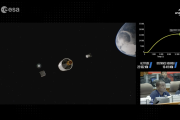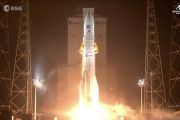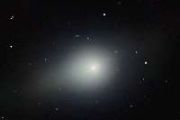
Copernical Team
Hayabusa2 Unveils New Clues on Solar System's Beginnings from Asteroid Samples
 The Japan Aerospace Exploration Agency (JAXA)'s ambitious Hayabusa2 mission has once again brought to Earth not just asteroid samples but potential keys to unlock mysteries of our solar system's infancy. The mission, which daringly snagged samples from the asteroid Ryugu, has given scientists a pristine peek into the volatile and organic-rich materials that were present when the solar system was
The Japan Aerospace Exploration Agency (JAXA)'s ambitious Hayabusa2 mission has once again brought to Earth not just asteroid samples but potential keys to unlock mysteries of our solar system's infancy. The mission, which daringly snagged samples from the asteroid Ryugu, has given scientists a pristine peek into the volatile and organic-rich materials that were present when the solar system was HK, Macao add thrust to China's space exploration
 Many people gazing at the moon shining brightly in the night sky wonder what secrets the Earth's satellite holds.
However, few of them have the chance to access lunar soil and study it to unlock such mysteries, unlike Qian Yuqi.
At the start of this year, Qian, a postdoctoral fellow from the Department of Earth Sciences at the University of Hong Kong, or HKU, applied to access lunar
Many people gazing at the moon shining brightly in the night sky wonder what secrets the Earth's satellite holds.
However, few of them have the chance to access lunar soil and study it to unlock such mysteries, unlike Qian Yuqi.
At the start of this year, Qian, a postdoctoral fellow from the Department of Earth Sciences at the University of Hong Kong, or HKU, applied to access lunar Image: NASA sounding rocket launches into Alaskan aurora
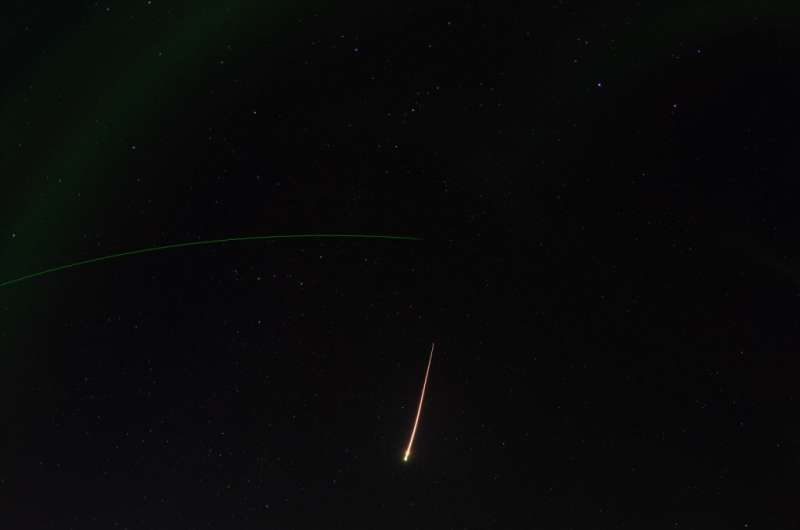
A sounding rocket launched from Poker Flat Research Range in Fairbanks, Alaska, Nov. 8, 2023, carrying NASA's Goddard Space Flight Center's DISSIPATION mission. The rocket launched into aurora and successfully captured data to understand how auroras heat the atmosphere and cause high-altitude winds.
The teams continue to support a second sounding rocket launch for BEAM-PIE, a mission for Los Alamos National Laboratory that will use an electron beam to create radio waves, measuring how atmospheric conditions modulate them. The data is key to interpreting measurements from many other missions.
NASA's Sounding Rockets Program, funded by NASA's Heliophysics Division, is managed at the agency's Wallops Flight Facility in Virginia, under NASA's Goddard Space Flight Center in Greenbelt, Maryland.
Provided by NASA
Open doors for the ESA-ESAC Open Day
 Video:
00:04:25
Video:
00:04:25
On Saturday 21st October, the European Space Agency opened the doors of the European Space Astronomy Centre in Villanueva de la Cañada (near Madrid), ESAC, to host the ESA Open Day. With a full program of talks and activities, the event featured tours, hands-on laboratories for children and get-togethers with science communicators, ESA astronaut and experts. More than 1800 people, among adults and children, had the opportunity to deepen their knowledge of the activities and programs in which ESA is involved every day.
Preparing for European commercial presence in low Earth orbit
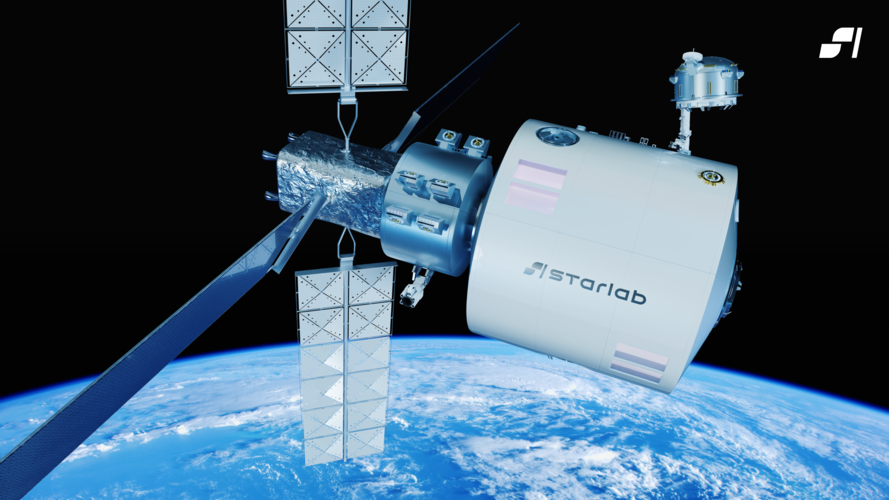
At ESA’s Space Summit in Seville, Spain, ESA, Airbus and Voyager Space signed a Memorandum of Understanding for the Starlab space station.
Experts to Explore AI Integration in Military Space Operations at LAX Forum
 American Conference Institute (ACI) is set to host the first Military Space Systems Forum, gathering defense and aerospace industry professionals and experts in Los Angeles, California, from November 28-29. This event will be held at the Embassy Suites LAX-North and aims to provide a platform for discussing the evolving role of space in national security.
As space becomes a critical fronti
American Conference Institute (ACI) is set to host the first Military Space Systems Forum, gathering defense and aerospace industry professionals and experts in Los Angeles, California, from November 28-29. This event will be held at the Embassy Suites LAX-North and aims to provide a platform for discussing the evolving role of space in national security.
As space becomes a critical fronti NASA awards medal to worm logotype designer Richard Danne
 NASA awarded Richard Danne on Monday with the Exceptional Public Achievement Medal for his outstanding work creating and launching NASA's red worm logotype, which made its debut in the 1970s before being retired decades later.
"This event, a culmination of a 50-year trek, is extremely rewarding. Creating the worm for NASA has been a singular achievement in my own career and in the histo
NASA awarded Richard Danne on Monday with the Exceptional Public Achievement Medal for his outstanding work creating and launching NASA's red worm logotype, which made its debut in the 1970s before being retired decades later.
"This event, a culmination of a 50-year trek, is extremely rewarding. Creating the worm for NASA has been a singular achievement in my own career and in the histo Going Beyond the Challenge for New and Continued Success
 NASA's Space Technology Mission Directorate connects the public to the agency's missions and explores creative possibilities for addressing the agency's research and technology development needs through prizes, challenges, and crowdsourcing opportunities. These challenges bridge NASA's institutional expertise with the ingenuity of industry experts, universities, and the public at large, resultin
NASA's Space Technology Mission Directorate connects the public to the agency's missions and explores creative possibilities for addressing the agency's research and technology development needs through prizes, challenges, and crowdsourcing opportunities. These challenges bridge NASA's institutional expertise with the ingenuity of industry experts, universities, and the public at large, resultin UK and European Space Agency Commit Funding for Shetland Satellite Launch
 The UK Space Agency and the European Space Agency's recent funding award of 3.5 million pounds to Rocket Factory Augsburg (RFA) UK underlines a collaborative effort to bolster the UK's space sector. This investment into SaxaVord Spaceport's infrastructure is a strategic maneuver, placing the UK on the path to becoming a significant player in the European space launch market by 2024.
RFA's
The UK Space Agency and the European Space Agency's recent funding award of 3.5 million pounds to Rocket Factory Augsburg (RFA) UK underlines a collaborative effort to bolster the UK's space sector. This investment into SaxaVord Spaceport's infrastructure is a strategic maneuver, placing the UK on the path to becoming a significant player in the European space launch market by 2024.
RFA's D-Orbit Welcomes Marubeni Corporation as Lead Investor in Series C Funding
 In a significant move within the space logistics sector, D-Orbit, a pioneer in satellite logistics services, has announced a new investment partnership with Marubeni Corporation, the Japanese industrial giant. The collaboration, formalized on November 8, is expected to be a major contributor to the evolution of the industry, with the partnership's completion anticipated by the end of 2023, pendi
In a significant move within the space logistics sector, D-Orbit, a pioneer in satellite logistics services, has announced a new investment partnership with Marubeni Corporation, the Japanese industrial giant. The collaboration, formalized on November 8, is expected to be a major contributor to the evolution of the industry, with the partnership's completion anticipated by the end of 2023, pendi 

